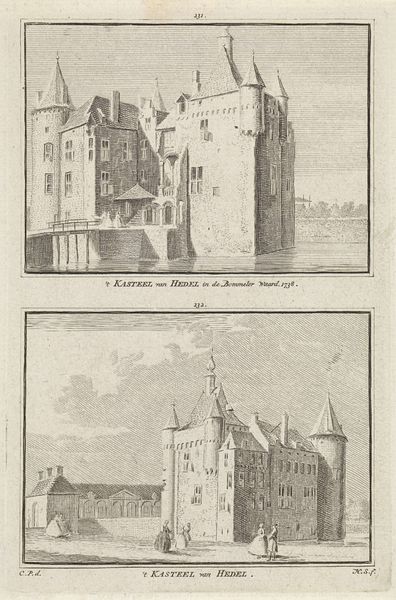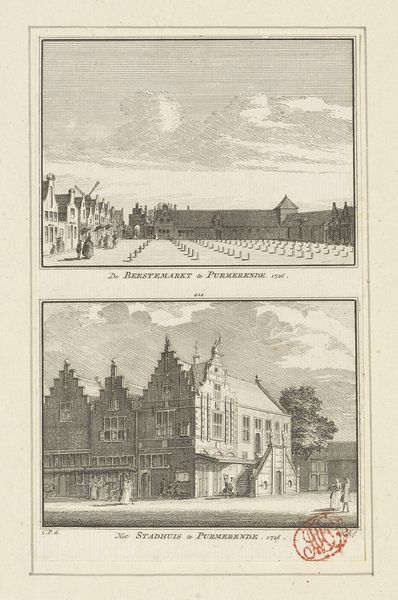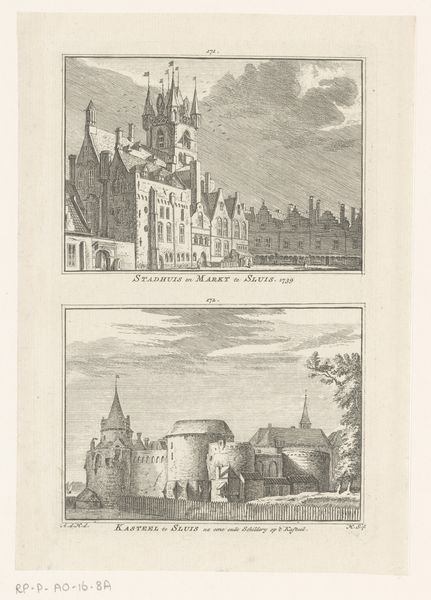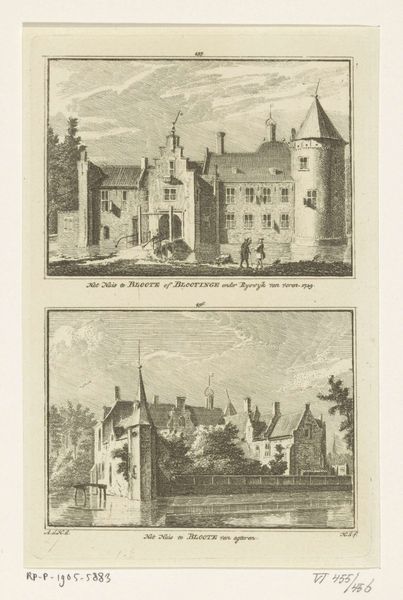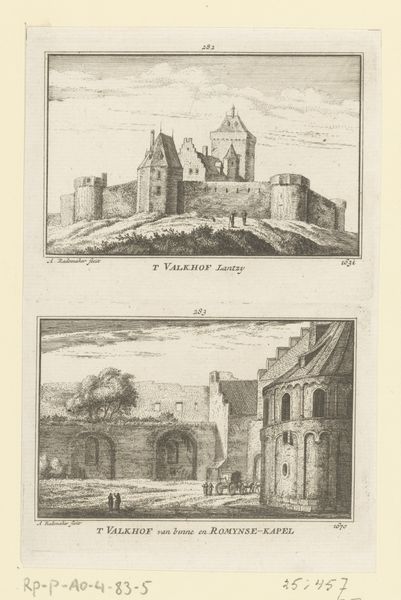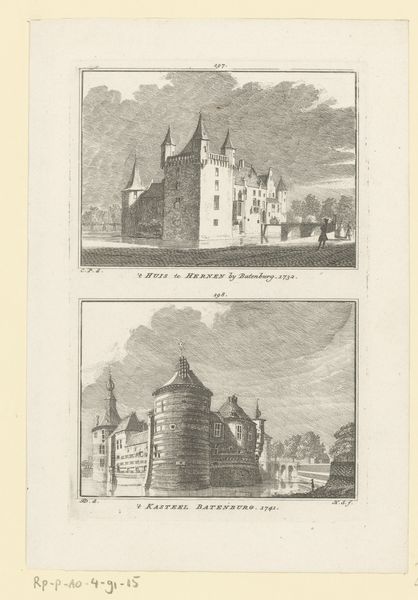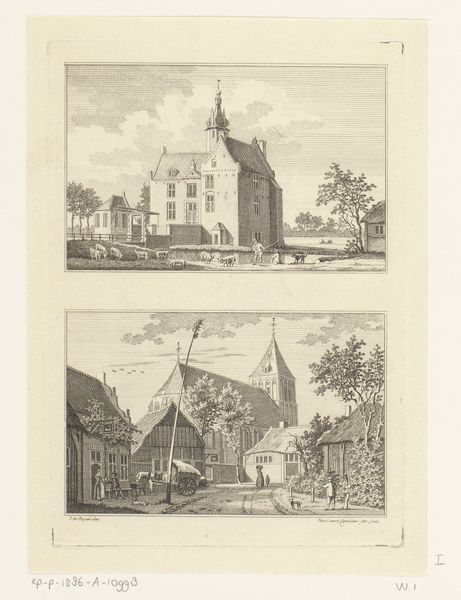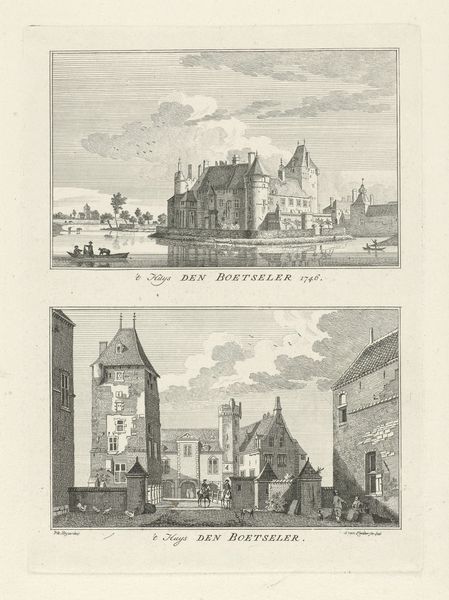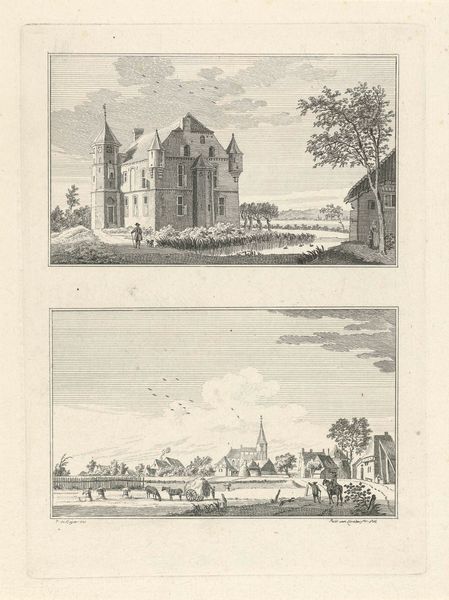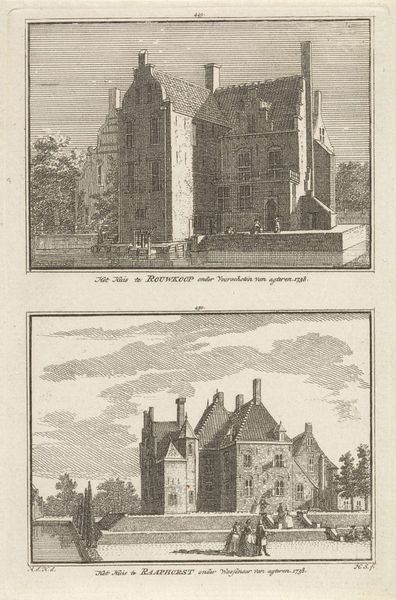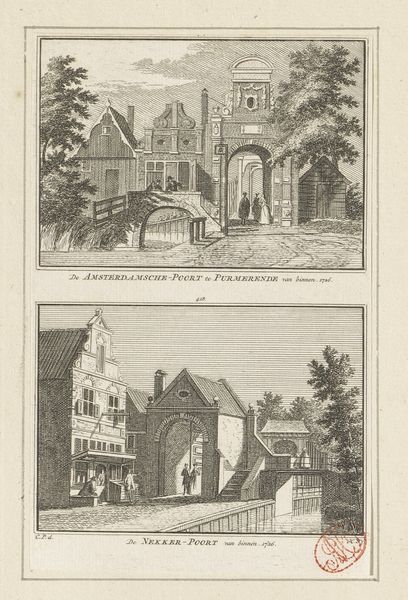
print, engraving
#
dutch-golden-age
# print
#
old engraving style
#
landscape
#
geometric
#
cityscape
#
history-painting
#
engraving
Dimensions: height 162 mm, width 103 mm
Copyright: Rijks Museum: Open Domain
Editor: This print, titled "Gezicht op Kasteel Purmersteijn te Purmerend, 1726," attributed to Hendrik Spilman, showcases detailed engravings of a castle. I'm struck by the stark contrast and how the artist captures the architecture in such a precise, almost clinical way. What aspects of this piece stand out to you? Curator: Well, I notice how the image positions these castle depictions. Prints like these were often commissioned and widely distributed, serving almost as early forms of propaganda. Think about the social and political implications. Who owned the castle, and who was commissioning the prints? These images projected power, status and even Dutch identity during a specific era. Do you notice any differences between the top and bottom image? Editor: Yes, the top one seems newer, well-maintained, while the bottom is almost in ruins. Is it suggesting a before-and-after, or decline of the structure over time? Curator: Possibly. It's more about presenting the castle's history and the family's lineage connected to the site. The images help construct a particular narrative about the region’s historical significance and influence and this narrative had an audience in mind, right? Can we decipher any messages? Editor: So the prints weren’t necessarily made for aesthetic appreciation but for shaping public perception? Almost like a social media post back then. Curator: Exactly. How images function within a broader social and institutional context is central to understanding this kind of artwork. It gives these prints, these seemingly benign architectural renderings, a new dimension. Editor: That makes me rethink how I look at historical art; it’s more than just aesthetics or the artist's intention; it reflects societal power structures. Curator: And understanding those structures gives us a far richer appreciation for even the simplest image.
Comments
No comments
Be the first to comment and join the conversation on the ultimate creative platform.
